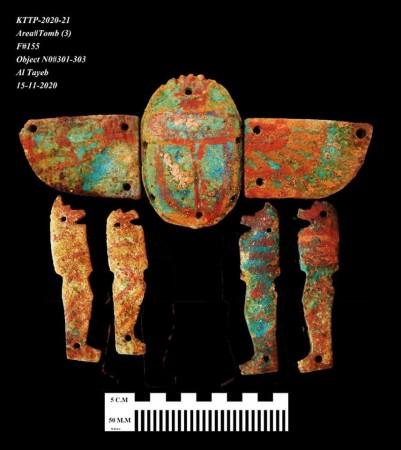In an archeological discovery that establishes Egypt's ancients secrets are far from unraveled, an expedition has unearthed a 3000-year-old 'Lost City of Gold. The mission led by noted Egyptologist Dr. Zahi Hawass discovered the city known as 'The Rise of Aten' near Luxor on Thursday.
The ancient city dates back to the reign of Amenhotep III, the ninth pharaoh of the 18th Dynasty, and held importance during the reigns of his successors such as Ay and Tutankhamun. Being a surprise finding, the team stumbled upon the largest city ever found in Egypt while trying to locate the mortuary temple of Tutankhamun, the last ruler of the 18th Dynasty.
Highlighting the importance of the excavation, Dr. Betsy Brian, Professor of Egyptology at John Hopkins University, said in a statement, "The discovery of this lost city is the second most important archeological discovery since the tomb of Tutankhamun."
A Sophisticated City

Founded by Amenhotep III, who is considered as one of Egypt's greatest pharaohs and reigned from 1391 BC to 1353 BC, the city is said to have been bustling with activity during the king's co-regency with his son, Amenhotep IV/Akhenaton. The lost city was the biggest industrial and administrative settlement of its time on the western bank of Luxor.
Excavation at the site near Luxor, which is also home to the famed 'Valley of the Kings' and 'Valley of the Queens', began in September 2020. However, only weeks into the expedition, the team uncovered widespread formations of mud bricks. They soon learned that it was a massive city that was in a well-preserved state, with almost intact walls and rooms laden with everyday tools.

"The city's streets are flanked by houses, which some of their walls are up to 3 meters high. We can reveal that the city extends to the west, all the way to the famous Deir el-Medina," said Dr. Zahi Hawass, leader of the expedition.
In the span of seven months since the commencement of the dig, numerous neighbourhoods were unburied, including a residential area, a bakery and an administrative district. Several artifacts such as colored pottery vessels, scarabs, rings, and mud bricks that bore seals of the great Amenhotep III's inscriptions or cartouche were also found. This helped in the confirmation of the city's age. According to history, the city is said to have been abandoned at some point and repopulated during King Tut's reign.

Unsolved Mysteries to Be Unraveled?
Throughout the expanse of the excavated areas, the team recovered several tools that were used for industrial activities such as weaving and spinning. Nevertheless, the mission also encountered several fascinating relics that will require further investigation. Some of them include two unique burials of a cow or bull, and the burial site of an individual with his arms outstretched to his side, with remnants of a rope wound around his knees.

However, the team believes that the ongoing excavation will yield not only the location of tombs teeming with priceless treasures but also answers to several crucial questions. Some of them include, 'Why was the site abandoned, and the capital shifted to the city of Amarna, or was it really abandoned in the first place?' and 'If the city was indeed abandoned, why was it repopulated during Tutankhamun's reign?'

"The discovery of the Lost City, not only will give us a rare glimpse into the life of the Ancient Egyptians at the time where the Empire was at his wealthiest but will help us shed light on one of history's greatest mystery: why did Akhenaten & Nefertiti decide to move to Amarna," stated Dr. Brian.
Archeologically-significant 2020
While 2020 will forever be associated with the COVID-19 pandemic, it was an eventful year for Egyptian archeology. In February 2020, Egyptian authorities announced the discovery of communal tombs for high priests at the archaeological site of Tuna El-Gabal in the city of Minya. 16 tombs containing around 20 sarcophagi and coffins of numerous sizes and shapes were uncovered.

At the ancient burial ground of Saqqara, archeologists struck historical gold. In September 2020, 13 well-preserved wooden coffins holding the mummies of Egyptian priests and high-ranking officials were disinterred. They were estimated to be approximately 2500 years old and belonged to a period of decline in ancient Egypt at around 500 BC.
The following month (November 2020), over 100 sarcophagi were discovered in Saqqara again. Much like the previous finding, the nearly 2500-years-old gilded wooden coffins held the mummified remains of priests and high-ranking officials from the Late and Ptolemaic periods.
As 2021 began, over 50 coffins older than 3000 years were discovered at Saqqara—making them the oldest sarcophagi to be found at the site. The anthropoid coffins contained images of the gods worshipped at the time along with passages from the 'Book of the Dead'.

















